Hey guys! Today, I want to address something that’s been on a lot of my clients’ minds lately. Heck, I know it’s often on my mind, too!

The topic du jour? How to get more clients.
And not only that, but how to get better clients with less effort.
There’s a lot of noise on the Internet, which can make it really difficult for people who need your help to find you.
Unfortunately, this can lead many business owners down the wrong (i.e. desperate) path in search of clients. It usually involves spending countless hours every week doing whatever you can in the hopes you’ll find someone — anyone — willing to pay for your services or products.
It’s a lot like throwing spaghetti at a wall. You throw as many strands as you can in different spots and watch to see how many of them will stick. Even then, those that outlast the ones that fell will eventually come down too.
And you can’t afford to run your business that way.
Here are the facts:
- You know that you provide a solution your audience really needs.
- In order to continue providing that solution, you need to work with clients who are a good fit for your business and willing to pay good money for your services.
- Ideally, you’ll be able to serve these clients over the long run or, at the very least, drum up other high-quality referrals from them.
So, you can’t just throw a bunch of lines out there and hope that somehow, someway you’ll find those perfect clients.
What you need to do is invest in tools and strategies that will actually help you get more clients. And, today, we’re going to explore 3 things you should be using to do that.

Step 1: Make Your Website a Must-Visit Destination
I hear this a lot:
“Why can’t I just build a Facebook page for my business?”
Oh boy. Well, there are a number of reasons why many business owners and solopreneurs think Facebook Business is all they need. For starters, it’s free. But is it really? It takes a lot of work to:
- Create a professional and polished Facebook business page.
- Keep the information and design updated to reflect your brand.
- Attract followers and turn them into an avid community.
- Plan and publish posts regularly.
- Engage with your audience.
- Run ads (which are never free and can be difficult to get an ROI on if you don’t know how to optimize them).
- Set it up to sell.
Need another reason not to put all your eggs in one basket with Facebook? There was that time it went down for three days. Multiply the amount of money you make (or should be making) every day times three and think about that for a second.
Never ever forget that your time equals money. And Facebook is a very time-expensive investment.
That’s not to say that you shouldn’t have a Facebook page. You definitely need one. But you need to lay down a solid foundation for your business first and you can’t rely on Facebook for that.
A professional website is the solution. What’s more, it can actually take a lot of weight off of your shoulders if you set it up right.
You see, a website allows you to do many things.
It’s a digital property you 100% own.
Unlike social media and email, this removes all other distractions when people are on your site. This makes it easier for your unique brand to make a stronger and lasting impression on leads, just as this introduction to Chris Gardner does:
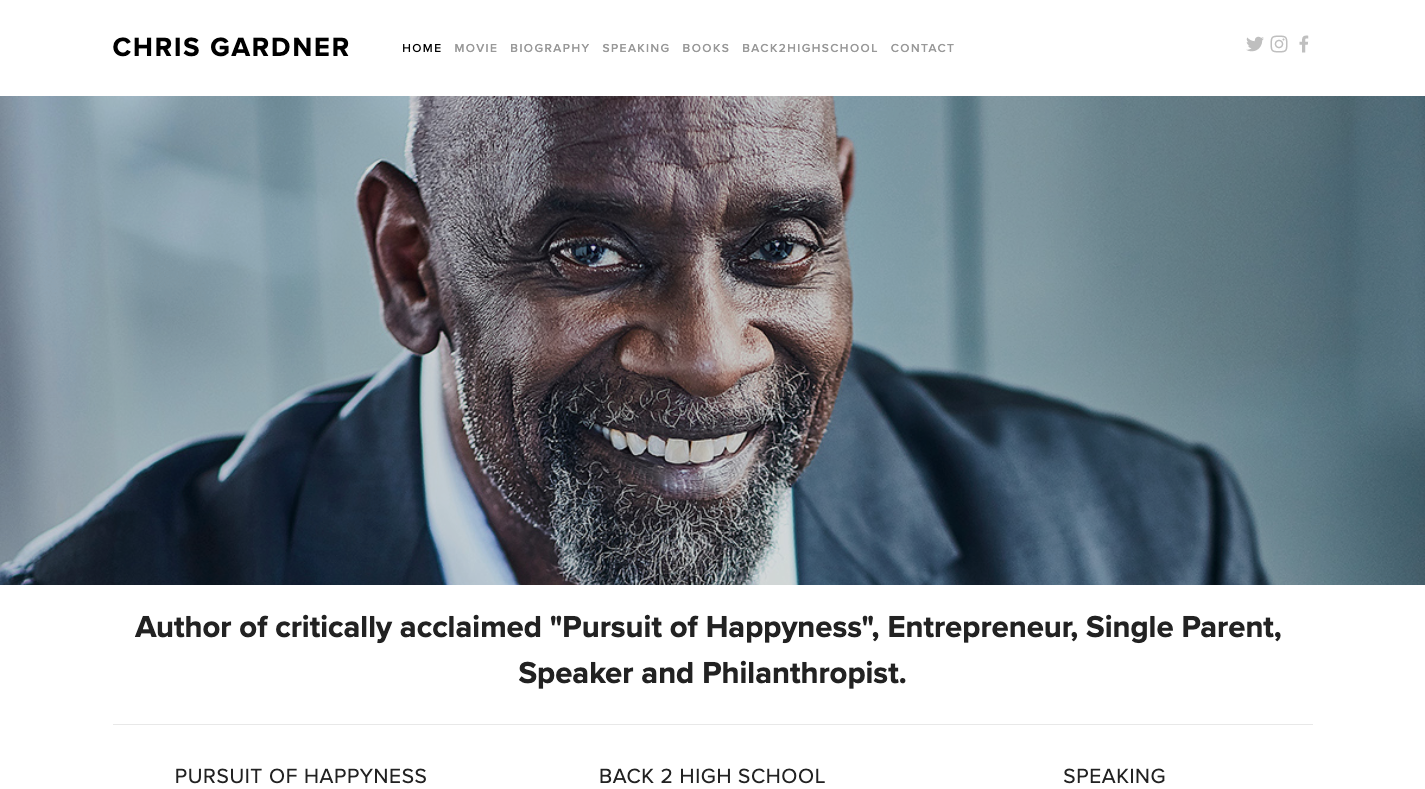
There’s no need for visitors to guess what this site is about or who’s behind it. The banner image and introduction to Chris as an author, entrepreneur, and so on succinctly summarizes who he is. Plus, without the distraction of competing websites, apps, and messages that visitors would see on social media, it’s easier to focus on one thing. “Do I want to learn more about who Chris is? Do I want to attend a speaking event? Where can I get in touch?”
Just like Chris, you have total control over your brand and how you get leads to take notice of and engage with it.
It enables you to provide answers to common questions and objections you get.
Prospects and clients probably ask you the same kinds of questions. Wouldn’t it be nice to simply copy a link to your FAQs, blog, or services page and point them to answers you’ve already anticipated and prepared in full?
It allows you to establish a presence in search.
The more you feed your website with great content, the more willing Google will be to show it to more people.
For instance, when you do a search for “transformational speaker and trainer” in Google, this is the top result:
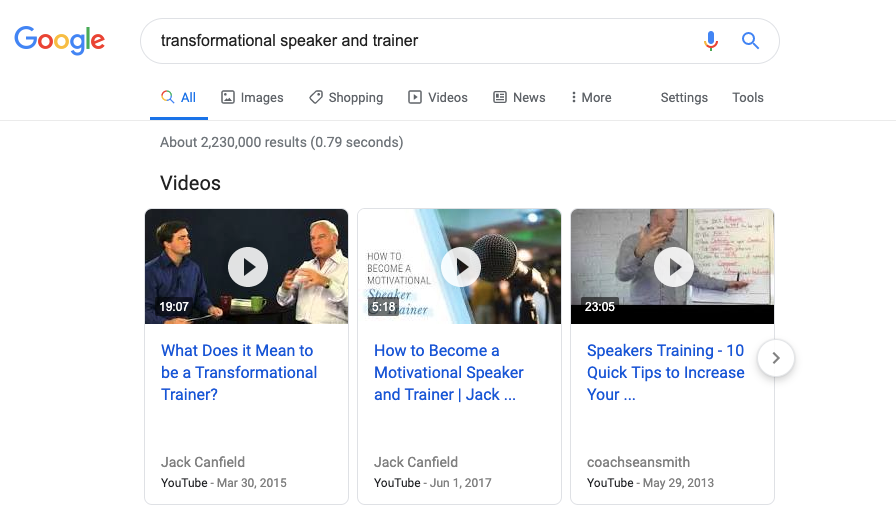
Jack Canfield claims two of the three top video spots. Scroll down once more and there he is again.
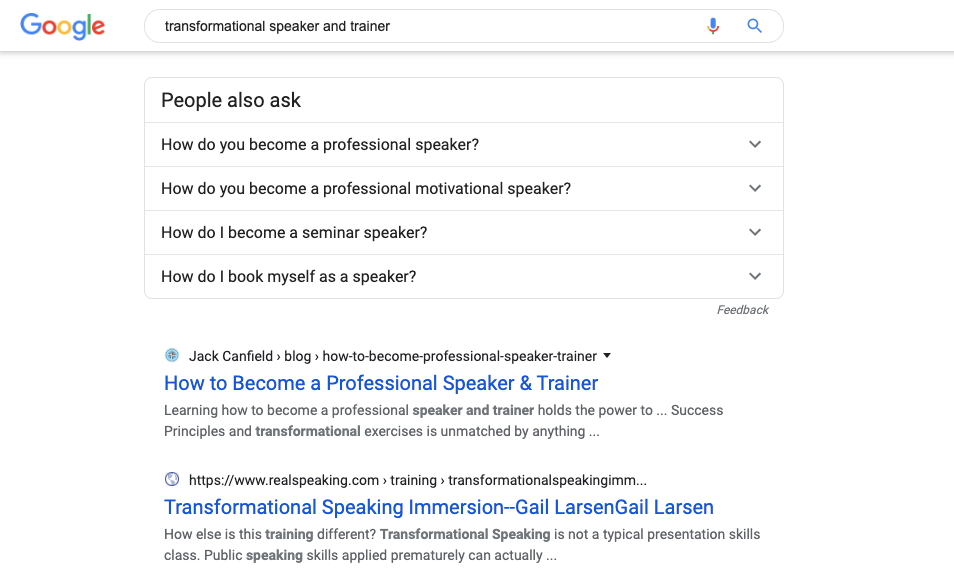
Consistently and successfully demonstrate your value through your website and content, and Google will reward you for it.
It helps prospects self-qualify.
The goal here isn’t just to get more clients. You want to get more clients that are the right fit for your business — ones who can pay what your services are worth and will trust you to do your job without second-guessing or micromanaging you.
One way to weed out bad-fit prospects is by creating a website that clearly explains who you cater to. This will help many of those bad-fit clients realize, “Hey, this probably isn’t worth my time.” And it’ll save you the trouble of having to meet with them to determine that yourself.
It allows you to automate those first steps with right-fit prospects.
Your website will also help you do less work to attract and start a conversation with right-fit clients.
For example, this is the home page for Krista Roesler:
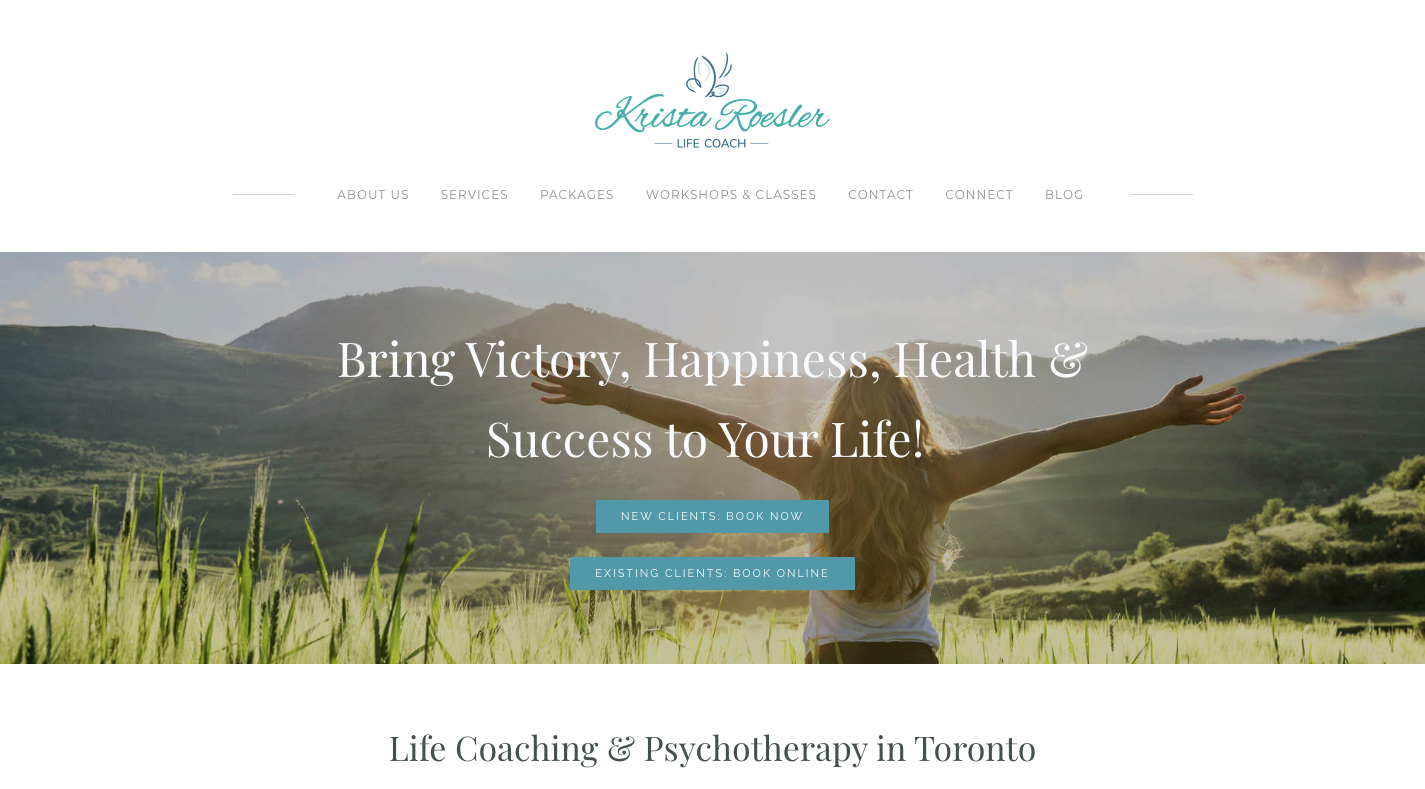
The website not only does a great job explaining who Krista is and how she helps clients, but it makes it really easy to put prospects in touch with her. Those two links in the image banner lead to the Contact page which simplifies it even further:
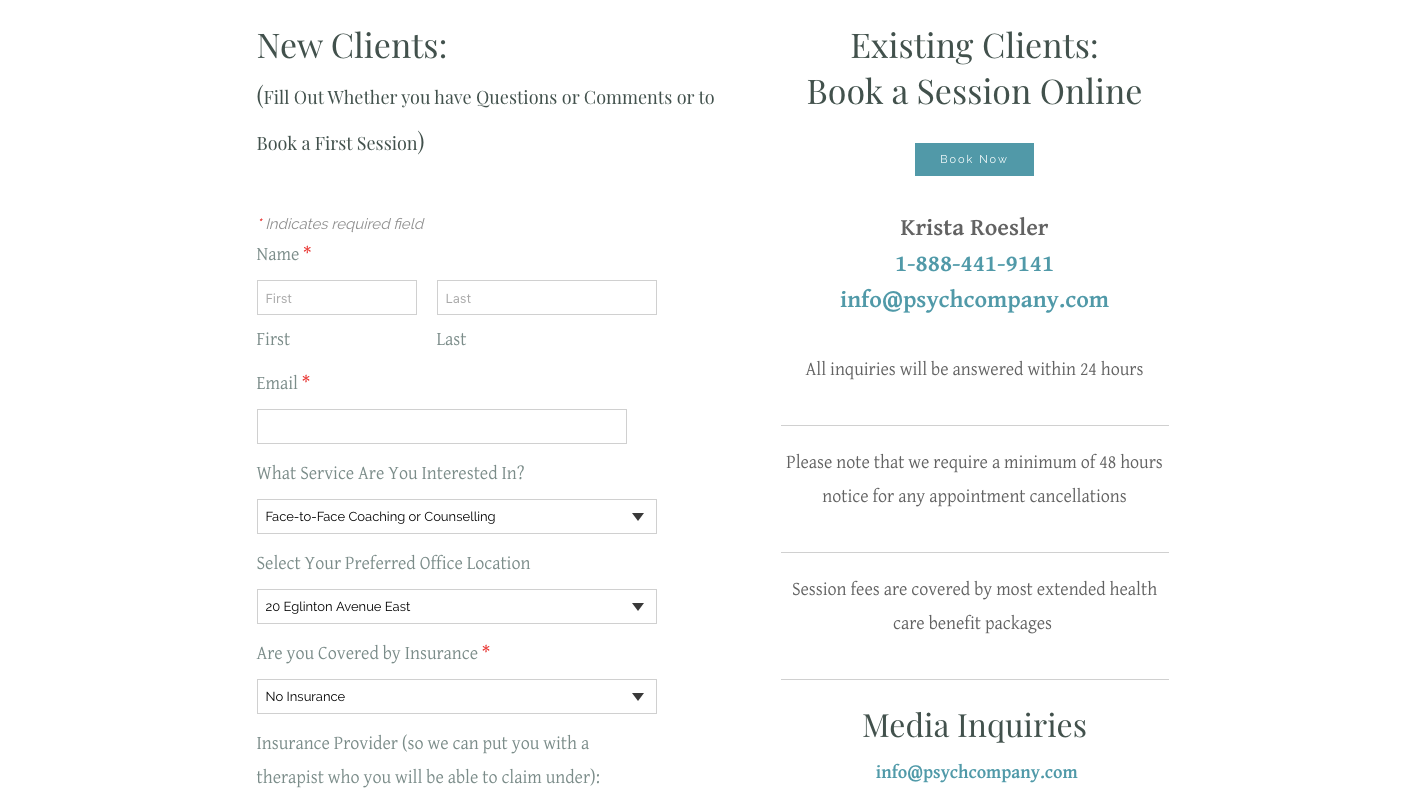
The contact form vets prospects while also collecting essential onboarding details. And the “Book Now” button makes it easy for existing clients to make appointments on their own.

Step 2: Give Your Knowledge Away for Free
With your website in place, you now have a website and search engines helping connect you to prospective clients who might not otherwise have found you. What’s more, if you write content regularly for your website, you can use those posts to reach even more people through a newsletter and social media.
But that takes work. So, let’s focus on what you can do to maximize your lead generation efforts with less of a time investment from you.
Specifically, we want to look at lead magnets and landing pages.
A lead magnet is nothing more than an awesome digital product you give away for free. You can make it as simple as a form that asks for a name and email address in exchange for a:
- Newsletter
- Discount
- Free digital product (like an ebook) or tool (like a calculator)
- The goal is to get leads that you can then build a relationship with over email (and, one day, the phone).
If you can hold their attention and continue to demonstrate your value, it’ll be quite easy to convince them to work with you when the time is right.
If you want to make the most of lead generation, though, a landing page will help. That’s because it requires a greater commitment from leads to get through than a simple transactional form on your home page. In return, you’ll end up with a higher quality list of leads to work with.
For example:
An ebook that will teach leads how to start a business and grow it to six-figures as Six Figure Photography does:
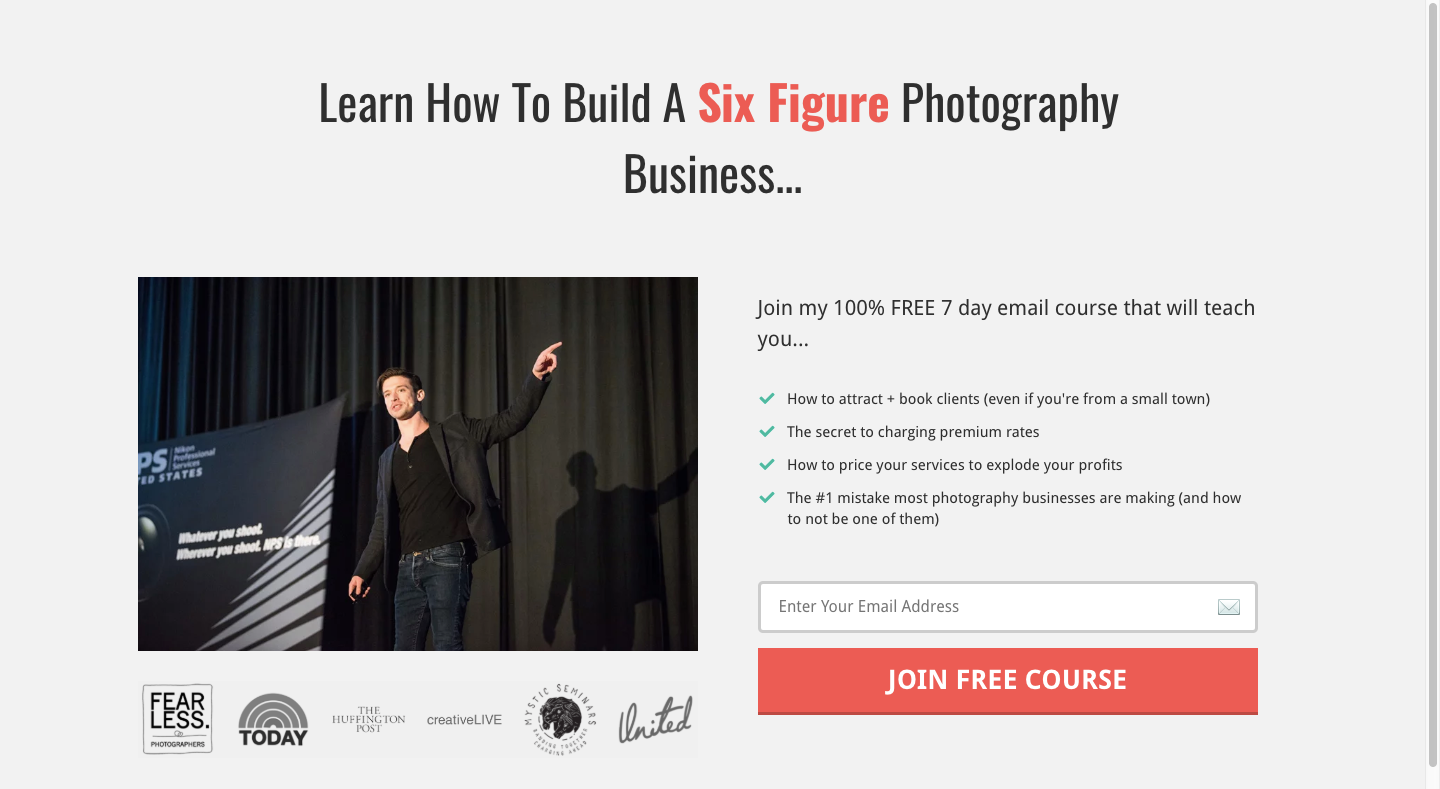
Free online courses that will teach leads how to start a business the right way like League of Innovators:
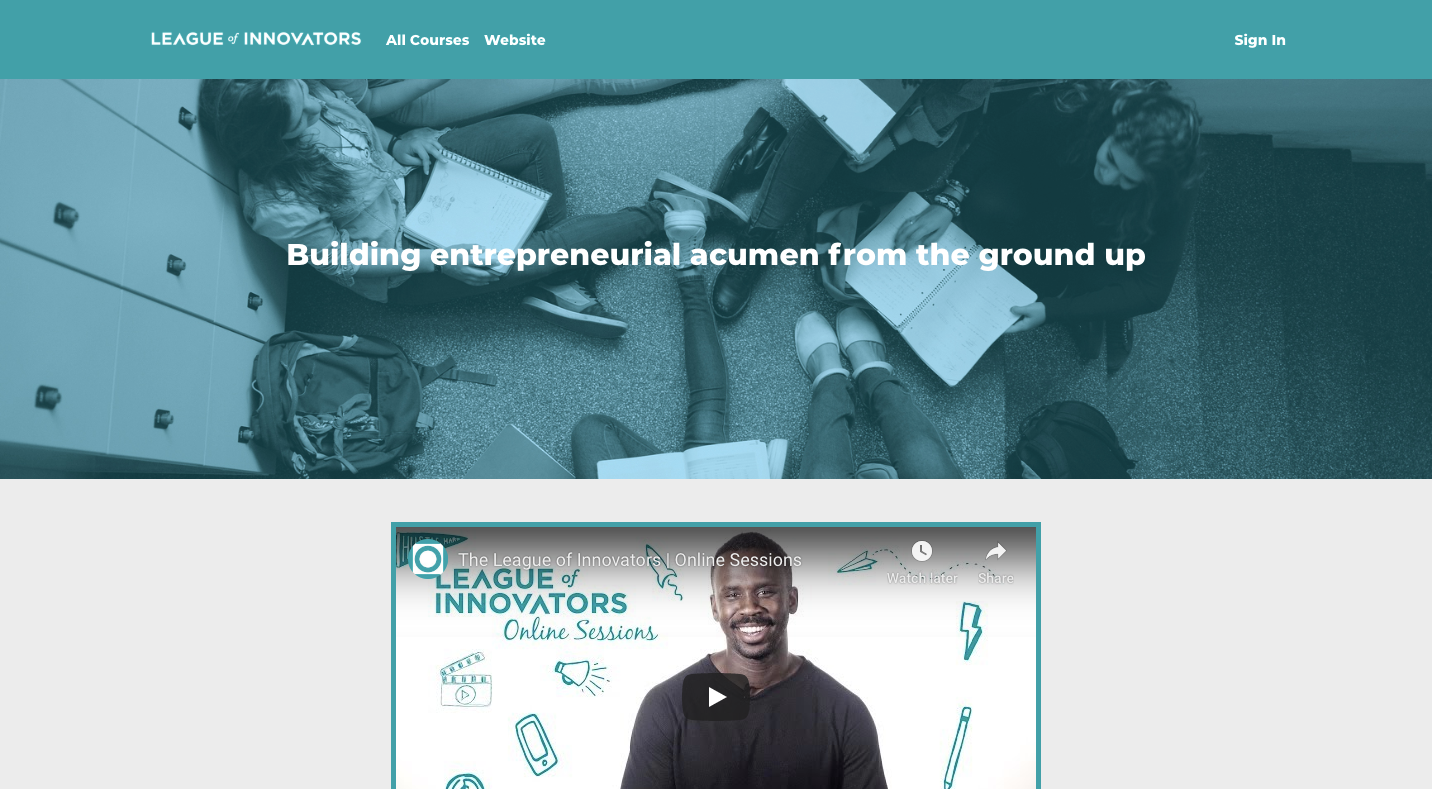
A free proposal template that will help leads close bigger deals with clients and not have to write each and every proposal from-scratch as WP Elevation does:
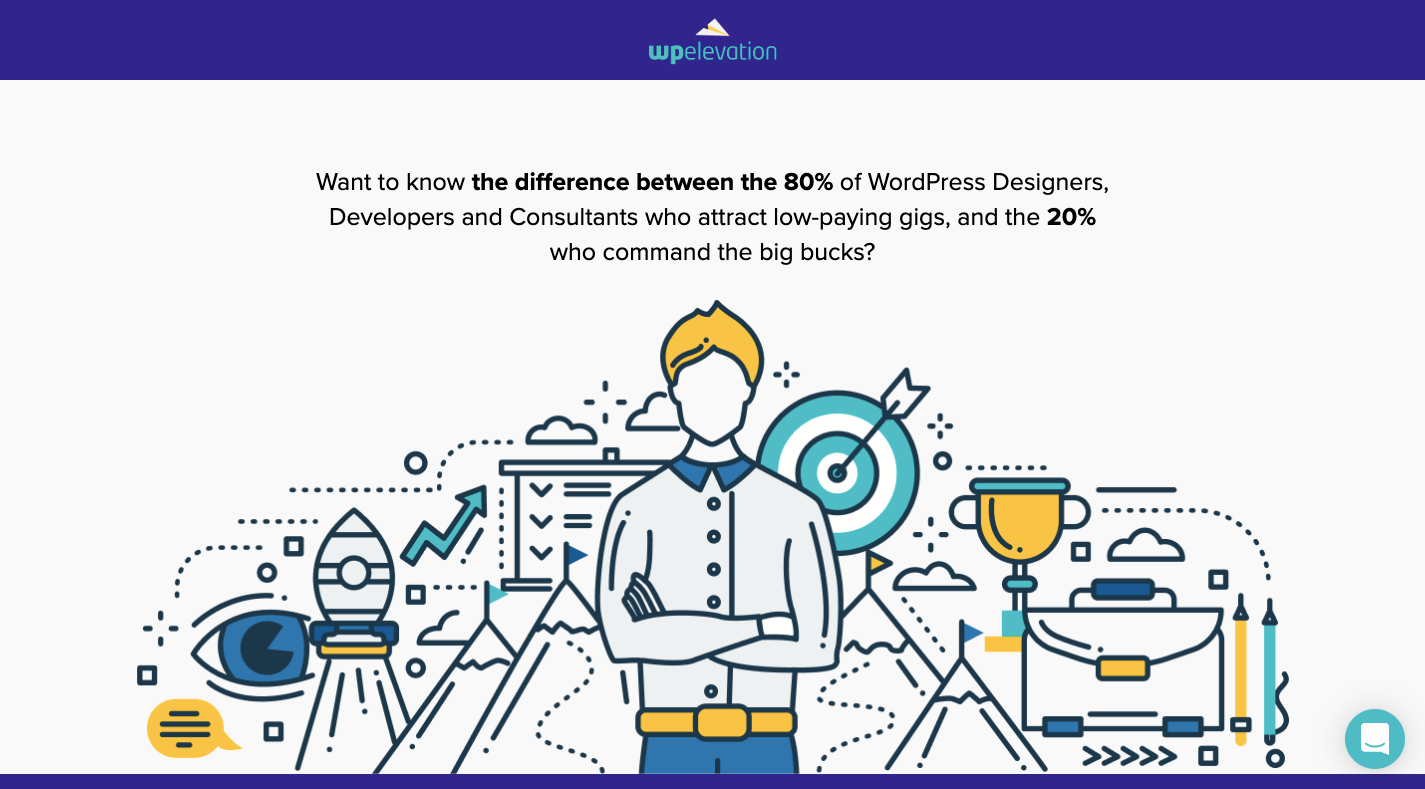
All it takes is one page and one especially enticing offer for your leads to fill in the information you require of them.

Step 3: Sell an Exclusive High-ticket Product or Service
Technically, your website has sales funnels on it already. They’re nothing more than pathways that take visitors from the point of entry to some point of exit where they “convert” in some way.
However, a high-ticket sales funnel is different.
Let’s say you’ve built a funnel driving traffic to a lead magnet. You’re going to attract leads who are in the top-of-the-funnel awareness-building stage. They’re testing the waters to see what this is all about without any commitment. Think of it like window shopping.
A funnel driving traffic to a high-ticket product, on the other hand, will attract a different kind of lead. These are the leads who are in the bottom-of-the-funnel and are getting ready to buy. So, the exchange is much more lengthy and complicated than, “Here’s your free ebook! Enjoy!”
First, you need to figure out what your high-ticket product is going to be.
- If you’re a coach, it might be a VIP coaching program or retreat.
- If you’re a consultant, it might be a deep discovery session.
- If you’re a web designer or developer, it might be a website maintenance plan.
- If you’re a writer, it might be an SEO audit.
Whatever your digital product is, it needs to be very valuable and something that you only need to create once but that will easily sell itself over and over again. In order for that to happen, your funnel’s design, content, and steps need to be set up to do that.
For example, this is the home page for Bethany Wolfe Fitness:
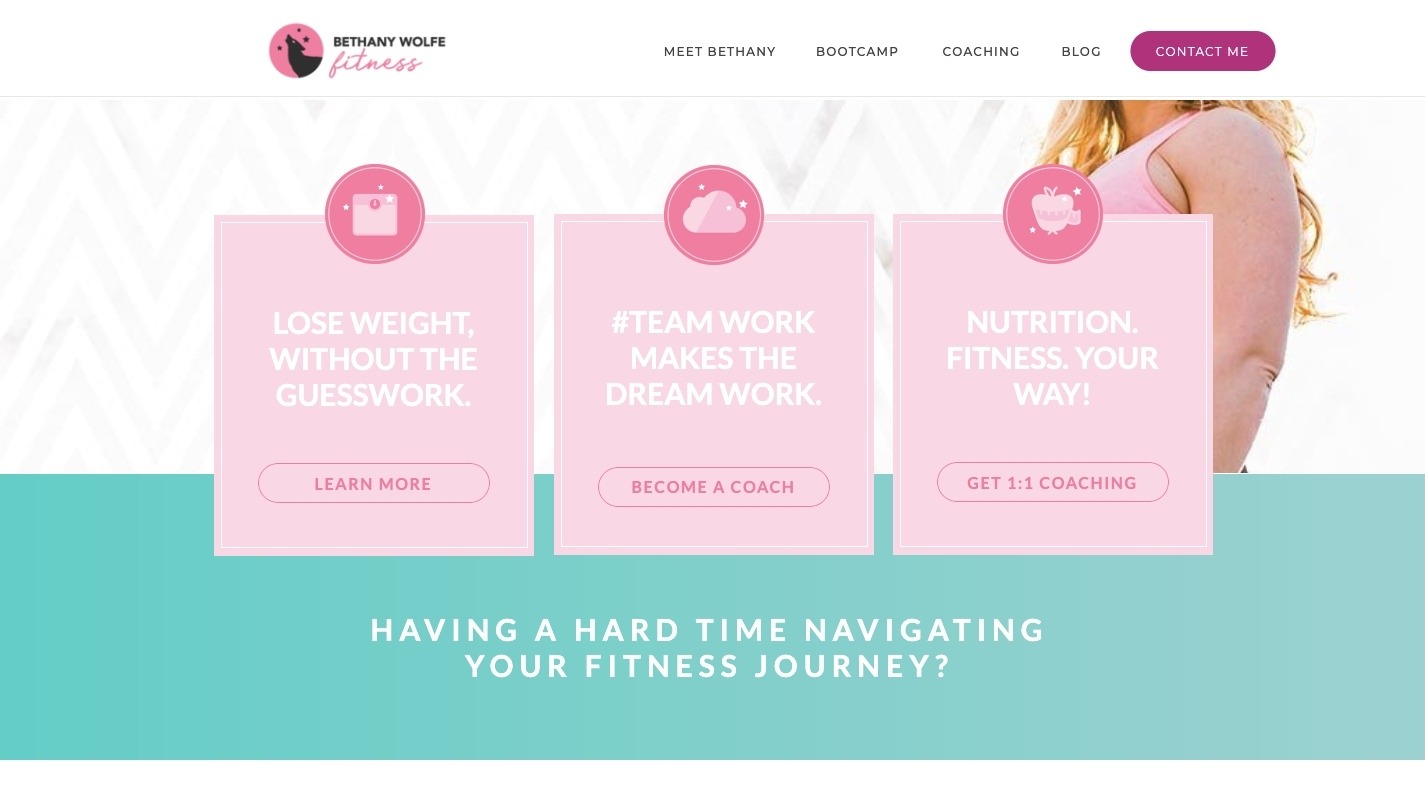
Now, her website actually uses both a lead magnet and a high-ticket sales funnel. This is the lead magnet visitors find at the bottom of the home page:
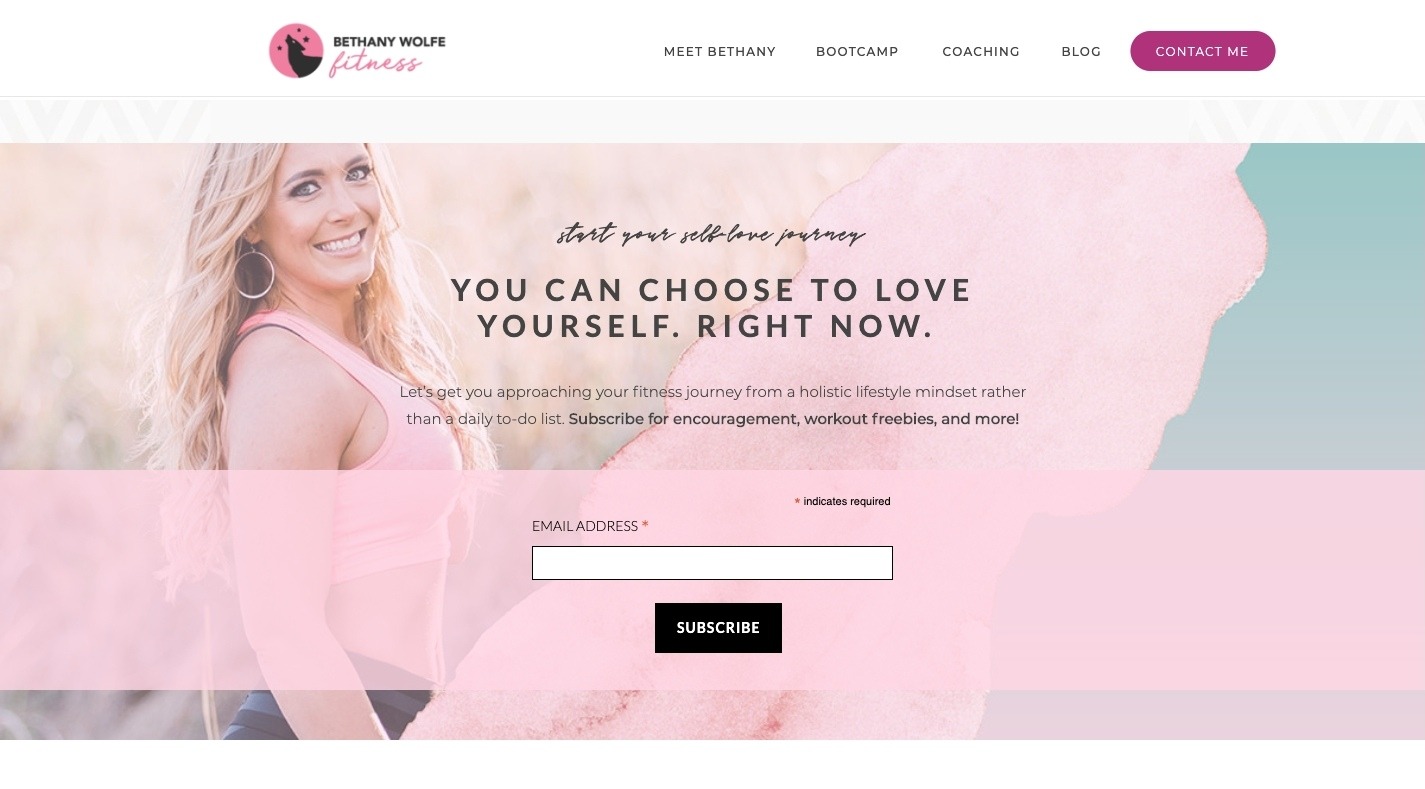
This is great for building awareness of your brand with new leads. If you’re ready to take it to the next level with those ready to take action, though, add a high-ticket sales funnel.
Look again at the home page banner above for Bethany’s website. Notice how it says “Get 1:1 Coaching”. This is where you’ll find her funnel.
It’s a very lengthy page full of sales copy that plays directly into the raw emotions of the targeted lead:
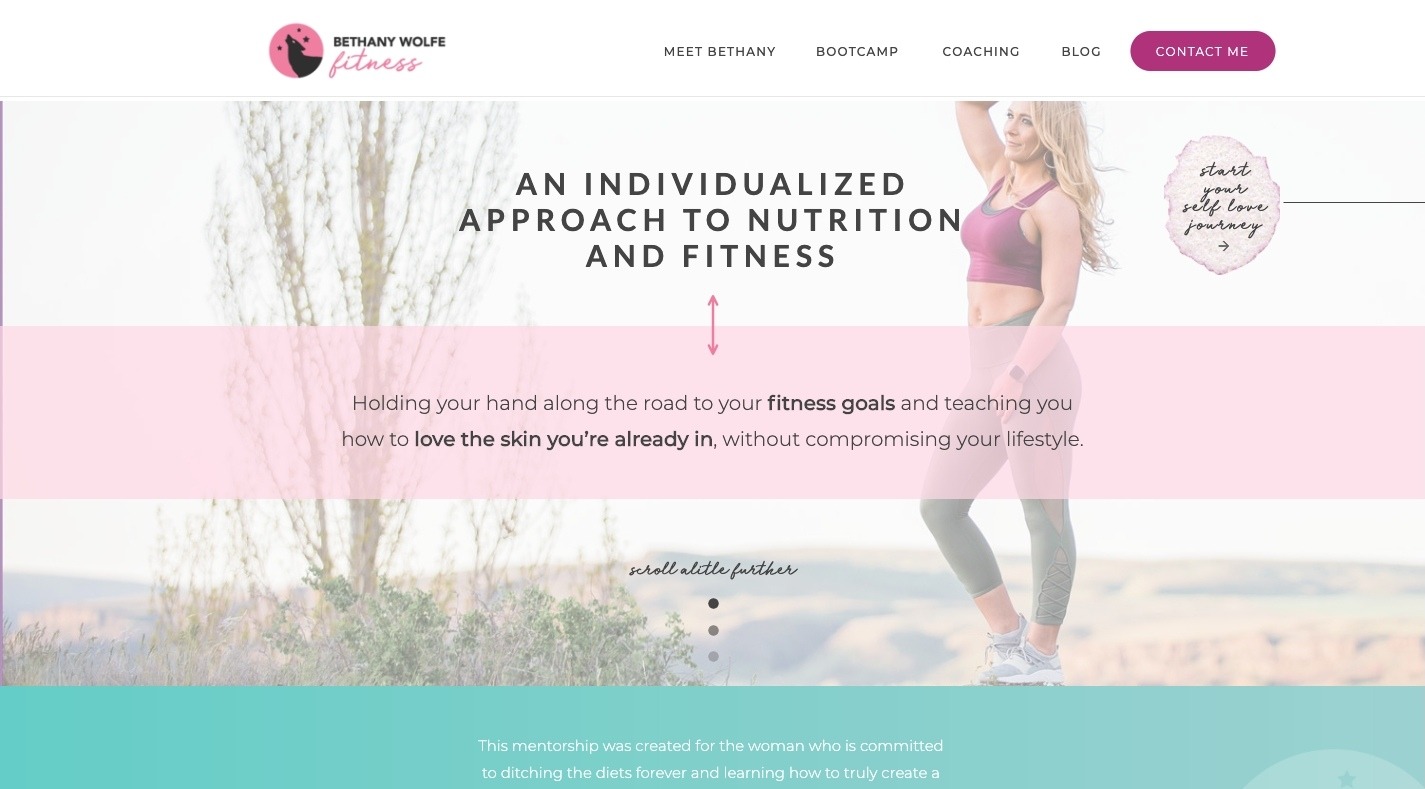
It explains exactly what leads get for their money spent:
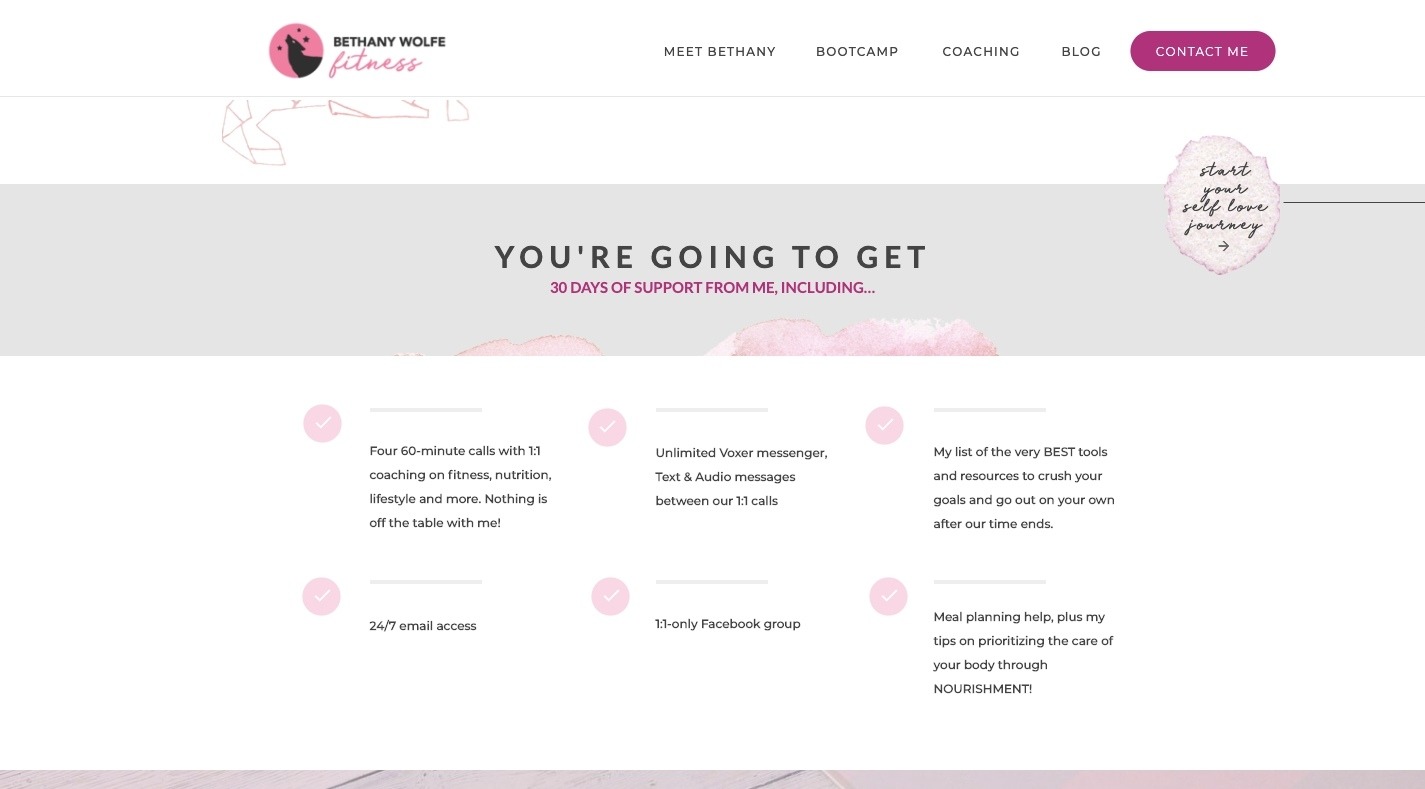
It breaks down next steps:
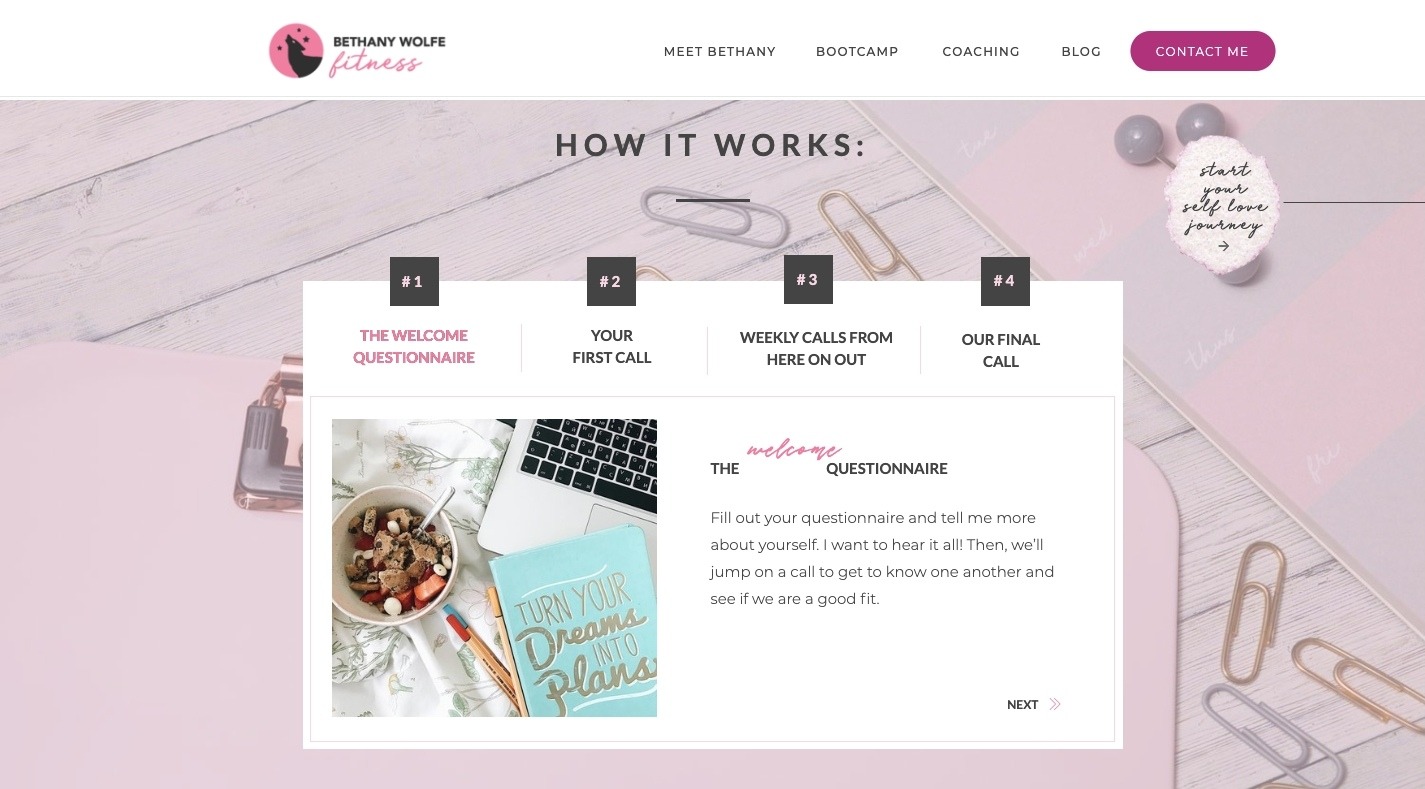
Then, when a lead decides they’re ready to get started, they’re taken to this final page:
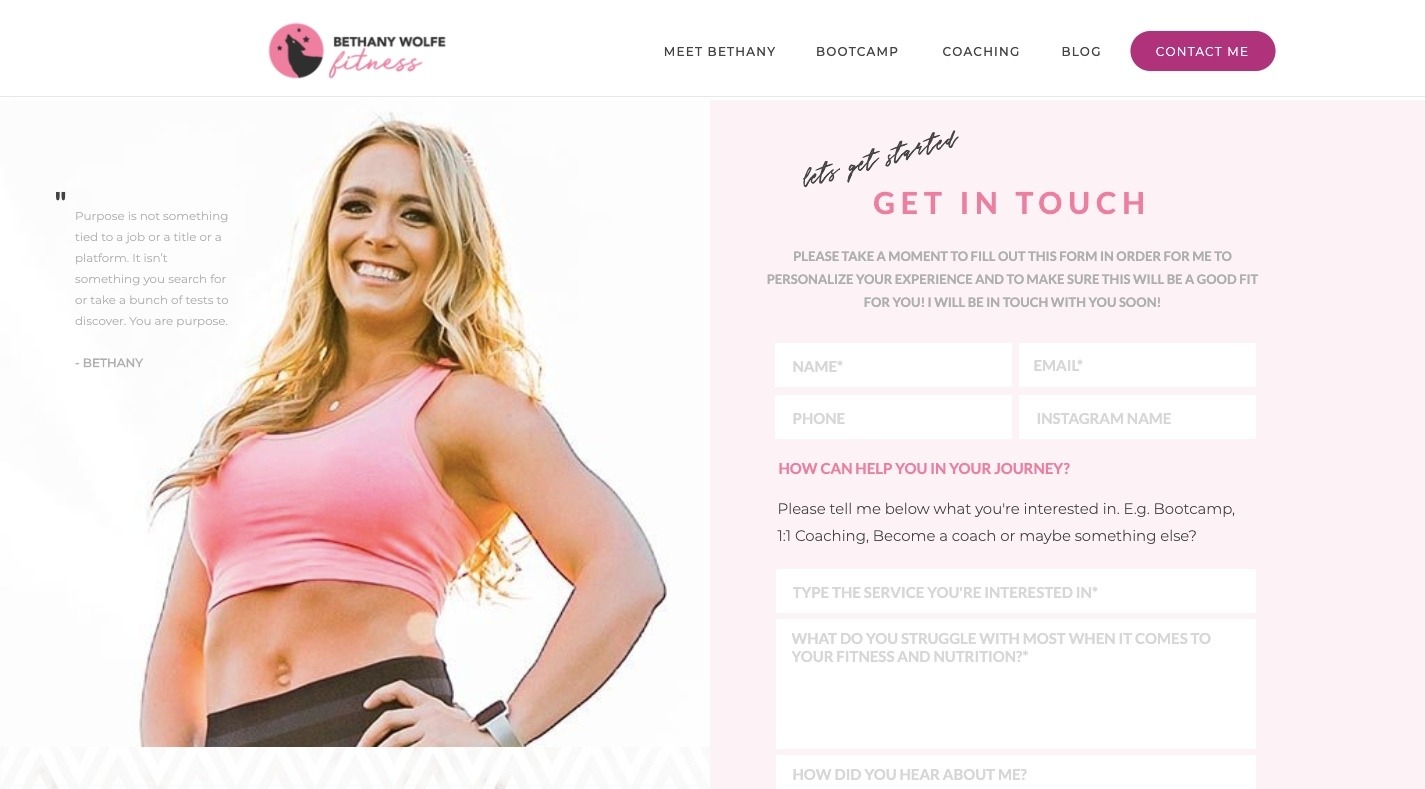
If there’s no need to vet your leads before signing them up, you can use a contact form as Bethany has done. However, not all sales funnels need this intermediary step.
That said, regardless of how long your sales funnel page or process is, the logic always remains the same:
- Name your leads’ pain.
- Give them a taste of what life is like without that pain.
- Lay out your promise.
- Pitch your price.
Leads who are at peak pain shouldn’t have any other response to this than to buy. These are the exact kind of clients you want to work with. The ones who understand what’s hurting their business or life and trust you to provide the solution (without ever having to get on the phone or email you, no less!)
What You Need to Do to Get More Clients
Don’t let anyone tell you that you need to jump right into link building, Facebook ads, or other marketing solutions. Those tactics work well for enterprise companies who are long established and have big budgets to play with.
Instead, focus on nailing the basics. You’ll be surprised by how quickly you pick up momentum when you put just these three tools to work for you.
That said, I get that your time is valuable and you might not want to spend it building out a website, lead magnet page, or sales funnel.
If that’s the case, but you know you need to get more clients (and better ones at that), schedule a call with me.
Let’s talk about what your winning
strategy should look like!
Psst...before you go! Get our FREE e-book:
how to attract, delight and close more clients
PLUS GET DESIGN TIPS, ADVICE & FREEBIES DELIVERED TO YOUR INBOX
DOWNLOAD THE EBOOK
Ashley Gadd
Written By:
Ashley Gadd is an award-winning business brand strategist, website designer, and educator who helps clients turn their ideas into captivating and strategic brands that convert. Blending her background in nonprofit marketing with her education in design, Ashley offers customer-centric brand experiences that connect the visual and strategic dots providing her clients the tools to build a sustainable and profitable business they’re proud of.
Brand Strategist - Website Designer - Educator
Leave a Reply Cancel reply
Anything is possible. Explore more.
CONTENT MARKETING
Case Studies
BUSINESS STRATEGY
WEBSITE
BRANDING
Sales Funnels
Let's be Friends!
Connecting the design and marketing dots to create a visual story that captures your shine and shares your message and mission in style.
Use this worksheet to bring more clarity to your business! Let this be your first step before you tackle your ideal customer profile and buyer persona.
FIND YOUR NICHE WORKSHEET!
DOWNLOAD THE WORKSHEET
Stick Around!
and bring much-needed clarity to your business.
very good post..